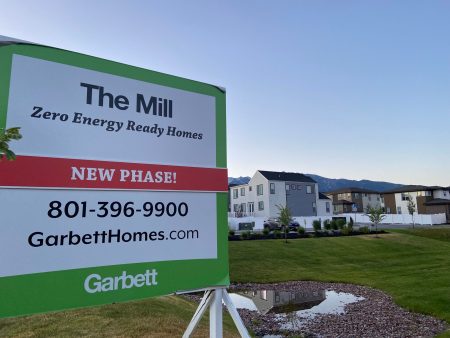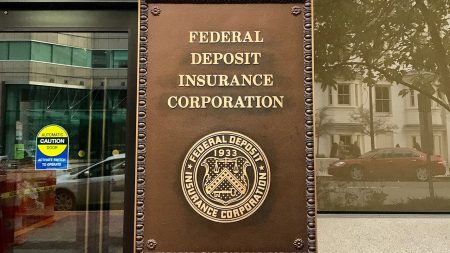Key takeaways
- A mortgage rate lock keeps the interest rate on the loan from changing for a certain period of time, ensuring you won’t pay more if rates rise before you finalize the loan.
- Typically, you can lock your rate for at least 30 days, and in some cases up to 120 days or longer, depending on the lender and loan type.
- Many lenders offer rate locks for free, while others charge a fee. Some only charge when you extend the initial mortgage rate lock period.
What is a mortgage rate lock?
A mortgage rate lock ensures the interest rate on your mortgage stays the same for a set period of time, typically from the initial quote to closing. If you were to lock your rate and then market rates rise before the loan closes, your rate wouldn’t increase, provided you close within the lock window and make no material changes to your loan application.
For example, if you were to lock in a rate of 6.68 percent for 45 days, and market rates then jumped to 7 percent within that period, you’d still get your loan at the lower 6.68 percent rate.
“The mortgage market can be unpredictable, which is why a mortgage rate lock can be a smart choice,” says Bob Driscoll, senior vice president and director of Residential Lending at Rockland Trust Bank in Norwood, Massachusetts.
It’s typically up to you to seek the rate lock, and skipping one isn’t always a bad strategy, especially if interest rates are falling or low in general. It just depends on the market when you buy and your risk tolerance.
What causes mortgage rates to change?
Mortgage rates move up and down based on broader movements in the economy, including the rate of inflation and Federal Reserve policy changes. Your rate isn’t entirely dependent on these factors, however: Your credit profile plays a major role in whether you qualify for the most competitive rates.
How do mortgage rate locks work? What happens if market rates drop?
Initial mortgage rate locks can last anywhere from 30 days to 120 days or longer, depending on the lender and type of mortgage. Some construction loans, for example, allow for locks of up to one year. For an initial lock, the ranges usually last:
- 30 days
- 45 days
- 60 days
- 90 days
For the lock to be enforceable, you’ll need to adhere to conditions set by the lender. These typically include closing the loan within the allotted time frame and avoiding any major changes to your mortgage application, such as shifting to a different loan program. If you don’t close within the lock window, you might have the option to extend it, often for a fee.
“The cost to extend depends on various factors, including where current rates stand at that time,” says Brian Shahwan, vice president, mortgage banker and broker at William Raveis Mortgage. “Some lenders allow for a free extension of up to 30 days, while others charge fractional points depending on the length of days needed to extend.”
While a rate lock protects you if market rates go up, what happens if they go down? You might be able to get a lower rate even after locking if your lender offers a float-down option. This usually comes with a fee and some conditions: Some lenders require rates to fall by a certain amount, for example, before the float-down option kicks in.
Does locking your rate require you to work with that lender?
No. If you still haven’t found a home and receive a better rate quote or terms from another lender, you can switch to that lender even if you locked with a different lender initially.
When can a mortgage rate be locked?
It depends on the mortgage lender. Some lenders offer a mortgage rate lock once the homebuyer is preapproved, while others might wait for the seller to accept the buyer’s offer first.
If you lock in too early, however, you might end up needing more time to find a home and face extension fees or a new, potentially higher rate. If you’re just starting to look at properties, consider waiting to lock.
If you’re already a homeowner and want to refinance to a new mortgage, it’s best to lock your rate as soon as you find an attractive offer — ideally one that’ll save you money.
How much does a rate lock cost?
Initial mortgage rate locks typically don’t cost an out-of-pocket fee. Rather, the cost is baked into the rate. If your lender does charge for an initial lock, it could be anywhere from a quarter to half a percent of your loan amount.
You will pay out of pocket, however, if you need to extend your rate lock or want a float-down option. The extension fee is often a percentage of the loan amount, and the longer the extension, the more you’ll pay.
What to know about locking a mortgage rate today
Mortgage rates were recently at their lowest levels of the year, but that doesn’t guarantee they’ll stay that way. If you’ve been waiting for lower rates to buy a home or refinance, now could be a good time to lock.
What about times when rates seem stable? A rate lock might still give you peace of mind — a valuable asset in today’s housing market. Consider if you were to lock in a 30-year mortgage rate of 7 percent on a $300,000 loan. At this rate, you’d pay $418,527 in interest over the life of the loan. Now, let’s say you don’t lock your rate and rates rise to 7.25 percent by the time you close. For the same mortgage, you’d pay $436,750 in interest — a difference of $18,223. You can use Bankrate’s mortgage calculator to get a sense of what you’d pay based on your locked-in rate.
Remember, as well, that a rate lock is just one piece of the mortgage origination process.
“Rather than asking questions regarding the rate at the preapproval stage, or without an accepted offer, I would suggest asking questions about overall closing costs and available credits,” Shahwan says, “along with recasting and post-close rate modification services, opportunities for a rate float down and financing options specifically for the type of home you are interested in.”
Why we ask for feedback
Your feedback helps us improve our content and services. It takes less than a minute to
complete.
Your responses are anonymous and will only be used for improving our website.
Help us improve our content
Read the full article here












